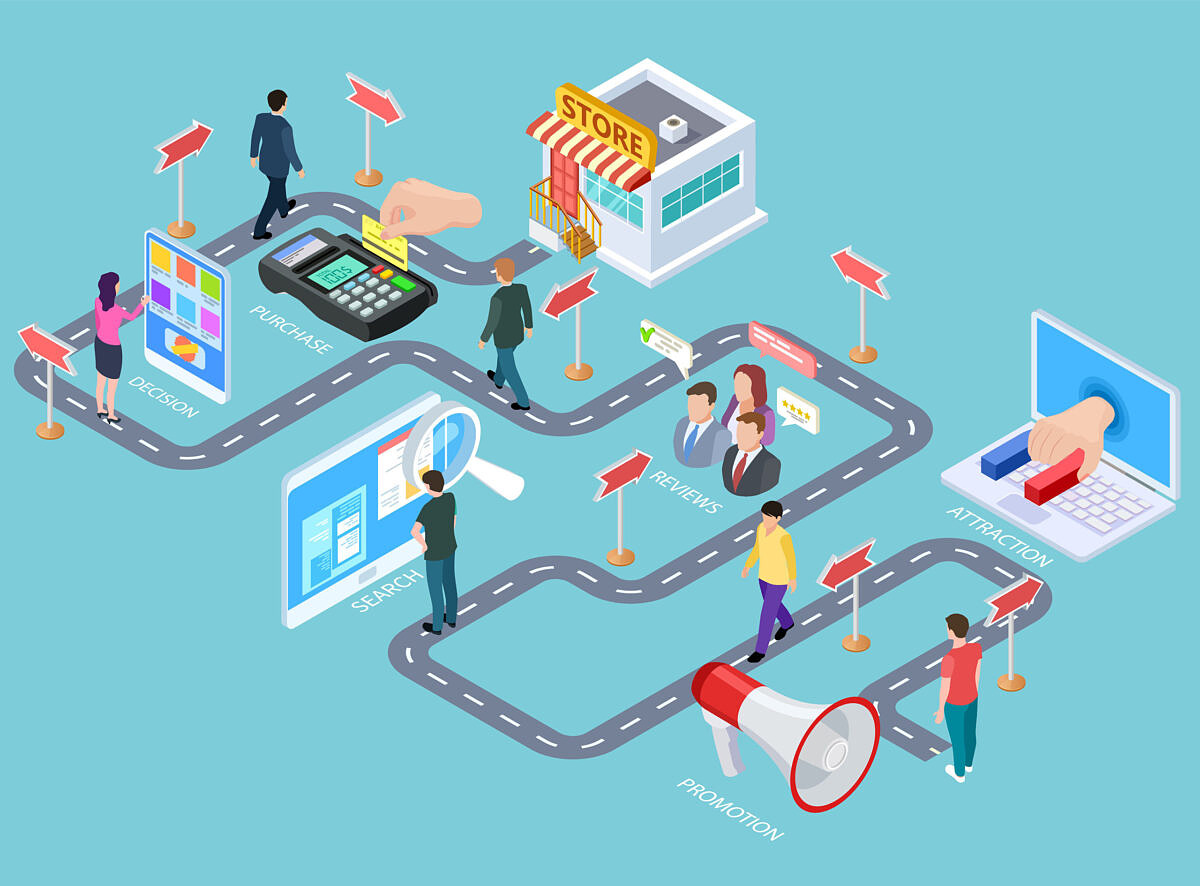The customer journey map: the key to understanding your customers
If you want happy customers, you have to understand them on an emotional level. What can cause frustration and moments of happiness along the customer journey? And how can these points be influenced? The customer journey map provides concrete answers.

Customer journey mapping as a method for success
A customer journey map depicts the ideal customer experience. It is a visual aid that shows all important touchpoints between a company and its customers. These could be, for example, advertising measures, consultations, contact with the service department, or a delivery to the customer. The agile framework of customer journey mapping focuses on customer experiences at touchpoints.
It's all about understanding the customer’s experience. Only on this basis can optimization measures be developed in a precise and targeted way.
Customer journey map: Emotions are key
Making a purchase is always an emotional process. And before buying something, many customers are unsure whether a product or service is really worth it. Advertising measures can seal the deal. After the sale, however, feelings of regret can lead to complaints. Similarly, contact with the service department can prove frustrating for the customer, for example, if the support team can’t find solutions to application issues. The customer journey map simulates this and other scenarios. It visualizes step-by-step where you can create positive moments (gains) and avoid negative situations (pains).

What advantages does the customer journey map offer?
A customer journey map deepens your understanding of your customer groups. Using this knowledge, the customer experience can be improved on a targeted basis. But that’s not all: customer journey mapping always involves various departments. Ideally, all relevant departments of a company are involved in this agile approach. These include, for example:
- sales
- service and support
- product development
- marketing
- the management team
The fact that everyone involved contributes their mindset and experience is not the only advantage of the cross-departmental development of a customer journey map. The overall goal is for each department involved to be aligned with the customer’s needs. The customer journey map is the perfect foundation for this. It provides a starting point to work more efficiently and collaboratively and act in the customer’s interest.
Creating customer journey maps
There is no universal customer journey map that reflects all customer groups and customer journeys. That is why you shouldn’t depict all processes on one huge, confusing map. It’s much smarter to look at individual customer goals, such as a product purchase or the termination of a service contract, on their own. Multiple journey maps can easily be used at the same time; one specific persona is required for each customer journey.
Everyone involved in customer journey mapping should always proceed step by step. It starts vertically: all important touchpoints are determined one after the other, lined up, and only then analyzed. In this context, the following applies: the more detailed the touchpoints, the better. The focus is only on real interactions with the customer. Although processes such as product development can be optimized if necessary using the insights gained from the mapping, they do not play a role in the analysis of the customer experience.
The second step is a horizontal analysis of the individual steps. The following questions must be addressed in each case:
- What is happening in this step?
- What decision will a customer make at this step, or what action should be taken? What are the goals?
- What positive emotions (gains) and negative emotions (pains) are reflected in this step?
Tips for practical implementation
The analysis gradually creates a matrix that reveals all obstacles and problems as well as positive moments along the customer journey. When brainstorming together, it is advisable to work with a large board and stickers or a smartboard. Images can help everyone involved to put themselves in the customer’s shoes. Various emoticons are also useful in representing the customer’s range of emotions.
There is no limit to creativity when it comes to customer journey mapping. However, you should never make assumptions based on a gut feeling. Instead, they should be supported by sound data, such as the following:
- customer evaluations and surveys
- studies and industry reports
- website and social media monitoring
- sales and customer service data
What can you do with the customer journey map?
A customer journey map has only fulfilled its purpose once those involved have drawn concrete conclusions from the results. The rule of thumb is to increase gains and alleviate pains. Gains are always considered success factors. Pains are risk factors. Everyone involved should work together to find solutions to increase gains and minimize pains. Step by step, a road map is created to adapt products and services or roles and tasks.
The bottom line
Customer journey mapping enables companies to focus on the customer and establish a shared mindset based on emotions. This method creates room for discussion and uncovers potential for optimization. It helps identify what is missing along the customer journey and how to turn frustrated travelers into happy customers.




